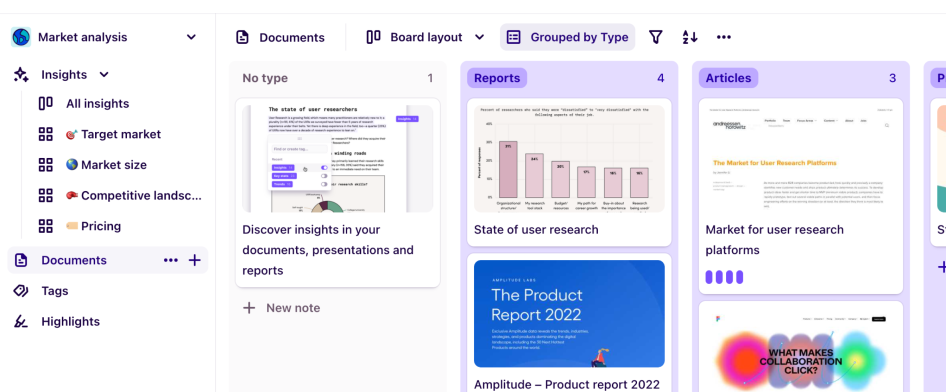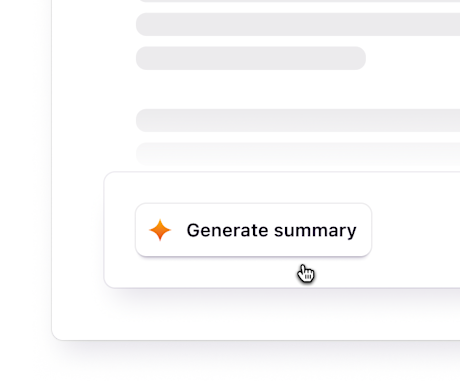Social media market research: Navigating opportunities and challenges
Last updated
3 April 2024
Author
Short on time? Get an AI generated summary of this article instead
Social media analysis and market research have grown considerably in importance and relevance for businesses wanting to understand their customers.
A 2023 Harris poll of business leaders found that over 90% believe their company's success will depend on the effective use of social media data and insights to inform business strategy.
Certainly, traditional forms of market research, such as surveys and focus groups, will continue to have a role. However, these can be backward-looking, and narrow in focus.
Social media listening and monitoring can provide a deeper understanding of in-the-moment trends and behaviors by analyzing a vast array of discussions on social media platforms. This approach can help businesses comprehensively understand their audience and make more informed decisions.
This article looks at the opportunities and challenges of social media for market research.
Market analysis template
Save time, highlight crucial insights, and drive strategic decision-making
Use template
Unparalleled access to understanding today’s global consumer
It’s strange to think that social media has only existed since the start of the millennia. Now, billions of users worldwide share their thoughts, preferences, and experiences on social media platforms. According to Statista, there are 4.95 billion social media users worldwide, or just under 60% of the global population.
While not everyone will post every day of the week, such a large population can’t help but generate massive amounts of data. Scraping social media data allows researchers to gain access to this unrivaled trove of information. It's like having a front-row seat to the global conversation regarding products, brands, and trends. (“Data scraping” is simply a technique whereby a computer extracts data from another program or platform).
Real-time analysis for swift decision-making
Traditional market research can take significant time to yield results. Timelines are generally measured in weeks, if not months. Here’s where social media data and sentiment analysis come into play. This technique allows businesses to analyze what consumers think, feel, or do in real-time.
Companies can swiftly make more agile decisions and adapt to an evolving market landscape rather than lagging behind what consumers want and expect or designing products for yesterday rather than today.
Oreo demonstrated the power of real-time social media analytics and marketing by capitalizing on a blackout during the 2013 Super Bowl. Following the outage and social media commentary, Oreo’s brand team captured the online sentiment by quickly crafting and tweeting an ad saying, "Power out? No problem. You can still dunk in the dark."
Source: Oreo Cookie, X
By leveraging social media trends, Oreo demonstrated its agility and creativity. The real-time response showcased the power of data capture linked directly to the brand and marketing teams.
Free AI content analysis generator
Make sense of your research by automatically summarizing key takeaways through our free content analysis tool.
Use free
Identifying trends and staying ahead of the curve
How did you find out about the Barbie movie? What about Oppenheimer? What about Barbenhiemer?
Film execs could have relied on surveys or focus groups to gauge consumer sentiment about their films. However, analyzing pre-release organic social media data is more effective for understanding audience excitement and anticipation. This approach would have revealed that Barbie, in particular, would be a knockout success.

Source: Far Out Magazine
Analysis of social media data like this allows businesses to identify emerging trends and capitalize on them before they reach their peak.
For example, by gauging the levels of evident excitement about the movie’s release, film studios could argue for wider distribution or make plans around merchandising related to the film.
By staying ahead of the curve, companies can position themselves as trendsetters rather than followers, gaining a competitive edge in the market.
Understanding your consumer better and optimizing your product
Ever wished you could read your customers' minds?
Well, sentiment analysis comes pretty close.
By deciphering the emotions behind customer reviews and social media posts, businesses can understand what their audience loves or dislikes about their products.
For example, the beloved ice cream brand Ben and Jerry’s used social media data analysis several years ago to optimize their iconic Cherry Garcia flavor. Customers were venting online about a lack of cherries. Digging deeper using sentiment analysis, they pinpointed the issue to the amount of cherries depicted on the label.
Once they redesigned the label to show fewer cherries, the complaints decreased (presumably because expectations and reality now matched).
After considering all the feedback, Ben & Jerry's also revamped the recipe with
Reduced sugar content
Sweeter cherry variety
Bigger chocolate chunks
This product facelift yielded remarkable results: Sales grew, and positive social media sentiment followed the relaunch.
More generally, social media feedback for any brand serves as a compass for product improvement, ensuring that companies meet customer expectations and boost brand loyalty.
More targeted marketing and personalization
In the era of information overload, personalized marketing is the key to capturing consumers' attention. Leveraging social media data allows businesses to understand their target audience intimately. Armed with this knowledge, companies can create hyper-targeted marketing campaigns that resonate with specific demographics, increasing the likelihood of engagement and conversion.
Brands like Amazon, Sephora, and Nike leverage social media data and other data and analytics streams to create unique, personalized customer experiences for their audiences, build closer relationships with them, and support loyalty.
While providing valuable insights, scraping social media data can raise questions and challenges around user privacy. There is a fine line between extracting information for market research and violating individuals' privacy rights.
Ensuring user privacy when accessing, aggregating, and sharing user social media data is crucial
Ethically and responsibly conducting the gathering and use of social media user data is vital.
Early in the history of the internet, America Online (AOL) showed how not to gather and share consumer data. In 2006, AOL released search query data for over 650,000 users. The released dataset, intended for research purposes, contained sensitive and personally identifiable information.
Due to the common practice of individuals searching for their names (along with those of friends and family), many people, while technically anonymous, were easily identifiable. Coupled with explicit searches or queries related to illegal activities, this had the potential for significant embarrassment and even evidence of criminal intent for the users involved.
In 2018, the Cambridge Analytica scandal revealed that the political consulting firm Cambridge Analytica had harvested the personal data of millions of Facebook users without their consent. They used this data to create psychological profiles for targeted political advertising during the 2016 United States presidential election.
The incident sparked widespread concern about user privacy, data protection, and the influence of social media on democratic processes. It led to increased scrutiny of tech companies and calls for greater regulation of data privacy and digital advertising practices. Social media platforms like Facebook and Twitter started severely limiting access to customer data from their platforms, leading to what is commonly called the ‘APIcalypse.’
Given these events, businesses and brands must collect and use user or consumer data ethically, considering data providers' privacy rights. It is essential to avoid publicly collecting and republishing data that could identify individuals, as doing so could result in legal repercussions for those who collect and use such data.
Considerations around accuracy and bias
Like any data source, there is the potential for inaccuracy and biases, which can skew the results of scraping social media data. For example, not everyone on social media expresses their true feelings, and specific demographics may be overrepresented.
In 2021, data from the Pew Research Center revealed a notable generation gap in social media usage. Specifically, less than 50% of Americans aged 65 and up engage with social media, contrasting sharply with the over 80% of users under 50.
Moreover, the distribution of users varies by platform, with Snapchat and Instagram predominantly drawing in younger audiences, while Facebook boasts the highest percentage of older users.
There is also something known as participation bias, whereby, on social media, individuals don’t contribute and discuss all topics equally. Instead, they engage and generate content on a limited range of issues important to them.
While not limited to social media market research (in survey research, respondents tend to complete surveys on topics that interest them), this type of bias can skew the data, making it less representative of populations as a whole. Therefore, researchers must be aware of these limitations and implement strategies to mitigate bias, ensuring the accuracy of their findings.
Coping with the sheer amount of data
There is a vast amount of data available, with over 4 billion people active on social media globally.
So, there’s a real risk of drowning in irrelevant data, hindering your ability to make informed decisions. Trying to sort through this tsunami to extract meaningful insights requires increasingly sophisticated filtration tools and algorithms.
Several analytics platforms provide solutions, including Sprout Social, HubSpot, and Meltwater, which distill the vast amount of data available into something manageable.
Anyone who has spent five minutes on a platform like Reddit or X knows that social media is a breeding ground for sarcasm, irony, and nuanced idioms.
While analytics and algorithms are improving daily, sentiment analysis tools struggle to accurately interpret these subtleties, leading to misunderstandings and potentially misrepresenting consumers’ true feelings about various situations and things.
For example, in the aftermath of the Boston Marathon bombing in 2013, the food website Epicurious erroneously attempted to share sympathy for the victims via Twitter.
Unfortunately, the sentiment analysis algorithm they used utterly failed to discern the gravity of the situation. Their automated tweets included promotional messages and links to breakfast recipes—highly insensitive given the scope of the tragedy.

Source: Fast Company
Epicurious quickly pulled the tone-deaf tweets and spent the next 48 hours apologizing. While that’s just one example, their blunder is an important reminder not to over-rely on computer-driven sentiment analysis. Ideally, there is still a human checking such predictive suggestions.
Adapting to evolving social media platforms
Just like any other area of tech (perhaps even more so), brands will need to adjust to the evolving landscape of social media platforms.
New platforms emerge (and decline), algorithms change, and user behaviors evolve. For example, TikTok has only been around since 2016 but has transformed the social media landscape. The platform boasts impressive statistics, including 3 billion downloads (a notable 672 million downloads in 2022 alone) and a staggering 50 million daily active users. It even has its own dedicated trends research reports center, which captures and shares some of the behavior and trends it picks up across its diverse user base.
To remain competitive, businesses and brands must consistently update their data collection and analysis methods and monitor consumer trends and behaviors.
It's clear that research using social media market research holds great potential. However, businesses must responsibly leverage social media data, addressing ethical concerns, mitigating biases, and continually refining analytical tools.
Social media data and sentiment analysis aren't just tools; they provide valuable guidance for businesses navigating the ever-changing landscape of consumer preferences.
By comprehending the opportunities and challenges associated with these tools, companies can chart a course toward more informed decision-making, improved products, and stronger connections with their audience.
Should you be using a customer insights hub?
Do you want to discover previous research faster?
Do you share your research findings with others?
Do you analyze research data?
Editor’s picks
Last updated: 3 April 2024
Last updated: 17 October 2024
Last updated: 13 May 2024
Last updated: 13 May 2024
Last updated: 16 February 2025
Last updated: 10 January 2025
Last updated: 13 May 2024
Last updated: 3 April 2024
Last updated: 13 May 2024
Last updated: 3 April 2024
Last updated: 3 April 2024
Last updated: 3 April 2024
Last updated: 14 November 2024
Last updated: 2 October 2024
Last updated: 12 September 2024
Last updated: 23 July 2024
Last updated: 22 February 2024
Last updated: 13 May 2024
Latest articles
Last updated: 16 February 2025
Last updated: 10 January 2025
Last updated: 14 November 2024
Last updated: 17 October 2024
Last updated: 2 October 2024
Last updated: 12 September 2024
Last updated: 23 July 2024
Last updated: 13 May 2024
Last updated: 13 May 2024
Last updated: 13 May 2024
Last updated: 13 May 2024
Last updated: 13 May 2024
Last updated: 3 April 2024
Last updated: 3 April 2024
Last updated: 3 April 2024
Last updated: 3 April 2024
Last updated: 3 April 2024
Last updated: 22 February 2024
Social media scraping is a powerful tool, but it comes with several issues and challenges